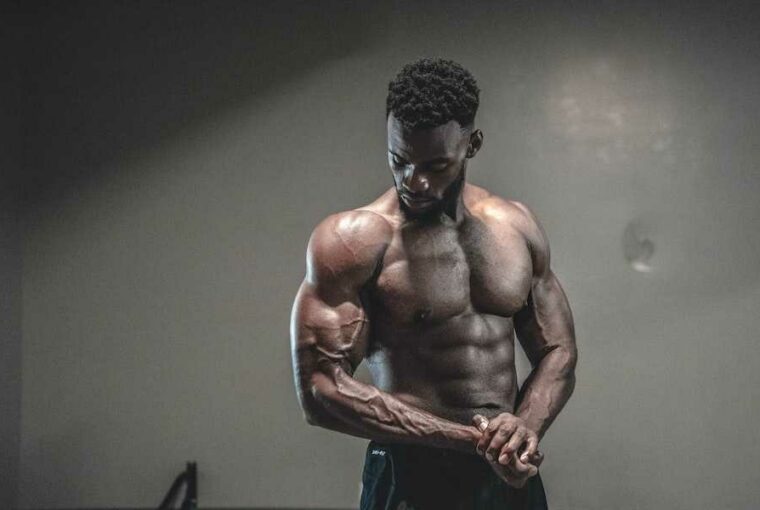The quest for well-sculpted biceps and formidable arm strength has led countless fitness enthusiasts to wonder, “How many curls should I do a day?” It’s a question that might seem simple on the surface but delves into the heart of effective strength training. Whether you’re a beginner taking your first steps in the world of fitness or a seasoned pro looking to fine-tune your routine, finding the optimal daily curl repetition count is a puzzle worth solving. In this blog, we embark on a journey to decipher this question, exploring the various factors that come into play, from your specific fitness goals and experience level to the importance of recovery and overall workout balance. Join us as we unravel the secrets to maximizing your curl routine and achieving those coveted, well-defined biceps.
How Many Curls Should I Do A Day?
The number of curls you should do in a day depends on your fitness goals, current fitness level, and the type of curls you are referring to (e.g., bicep curls, leg curls, etc.). Let’s focus on bicep curls, as they are a common exercise.
For general fitness and muscle maintenance, you can perform bicep curls 2-3 times a week with 3-4 sets of 8-12 repetitions per set. This is a good starting point for most people.
If your goal is to build muscle (hypertrophy), you can increase the volume by doing more sets and reps. For example, you might perform 4-5 sets of 8-12 repetitions, 3-4 times a week. Ensure you use an appropriate weight that allows you to complete the desired number of repetitions with proper form.
It’s important to note that overtraining can lead to injuries, so it’s crucial to listen to your body. If you experience excessive soreness, fatigue, or joint pain, it may be a sign that you’re doing too much. In such cases, it’s a good idea to reduce the frequency or intensity of your workouts.
Additionally, it’s essential to incorporate a variety of exercises into your routine to ensure balanced muscle development and overall fitness. Consulting with a fitness professional or personal trainer can help you create a tailored workout plan that aligns with your goals and abilities.
The Importance Of Daily Curl Repetitions
If you’re embarking on a fitness journey or aiming to sculpt those biceps, the question often arises: “How many curls should I do a day?” The number of curls you should perform daily depends on various factors, including your fitness goals, experience level, and overall workout routine. Let’s delve into this topic to find the optimal answer for you.
Defining Your Fitness Goals:
The number of curls you should do daily hinges on your fitness objectives. If your goal is to build muscle mass and strength, a higher number of curls might be necessary. Typically, for muscle growth, experts recommend doing three to five sets of 8-12 repetitions, with at least a day of rest between targeting the same muscle group. This means that you shouldn’t be doing curls every day, but rather every other day, allowing your muscles to recover and grow effectively.
Considering Your Experience Level:
Your experience level plays a significant role in determining your daily curl count. If you’re a beginner, it’s crucial to start gradually to avoid overtraining or injury. Begin with 2-3 sets of 8-10 reps, focusing on proper form and technique. As you gain experience and your muscles adapt, you can gradually increase the number of curls.
Listening To Your Body:
One of the most crucial factors in determining how many curls you should do a day is listening to your body. Pay attention to muscle soreness, fatigue, and recovery. If your muscles are excessively sore or you feel fatigued, it’s essential to give them adequate rest. Pushing too hard without proper recovery can lead to injury and hinder your progress.
Balancing Curls With Other Exercises:
Remember that curls are just one part of a comprehensive workout routine. It’s essential to balance your exercise regimen to ensure overall muscle development and prevent muscle imbalances. Incorporate compound exercises like bench presses, pull-ups, and squats to work different muscle groups, enhancing your overall fitness.
Determining Your Ideal Daily Curl Repetition Count
Now, let’s address the central question: How many curls should you do a day? The answer varies based on your fitness level, goals, and the type of curls you perform.
- Fitness Goals: Start by defining your fitness objectives. Are you aiming for muscle growth, strength, or endurance? The number of curl repetitions you should do daily will vary based on these goals.
- Experience Level: Consider your experience level. Beginners should start with fewer repetitions and gradually increase them as they become more comfortable with the exercise.
- Muscle Recovery: Pay attention to your body’s recovery. Adequate rest between curl sessions is crucial to allow your muscles to recover and grow.
- Proper Form: Focus on maintaining proper form and technique throughout each repetition. Sacrificing form for higher repetitions can lead to injury.
- Muscle Group Variation: Remember that curls primarily target the biceps. To ensure balanced muscle development, incorporate other exercises that target different muscle groups in your routine.
- Consult a Trainer: If you’re unsure about the ideal daily curl repetition count for your specific circumstances, consider consulting a fitness trainer or expert who can provide personalized guidance.
- Trial and Adjustment: Be prepared to experiment with different repetition counts. What works for one person may not be suitable for another. Adjust your daily curl count based on your progress and how your body responds.
- Listen to Your Body: Always listen to your body. If you experience excessive soreness, fatigue, or discomfort, it’s a sign that you may need to reduce the daily repetition count or increase rest days.
- Recovery Days: Integrate rest days into your workout routine. Overtraining can lead to burnout and injury, so ensure you have days where you don’t perform curls.
- Set Realistic Goals: Set achievable goals that are aligned with your fitness level. Pushing too hard too quickly can lead to frustration and potential setbacks.
- Long-Term Consistency: Remember that consistency is key to seeing results. It’s not just about the number of repetitions in a single session but about how you maintain your routine over time.
- Track Progress: Keep a workout journal or use fitness apps to track your progress. Monitoring your daily curl repetition count and its impact on your strength and muscle growth can help you make informed adjustments.
Ultimately, determining your ideal daily curl repetition count requires a combination of factors and personalization. By taking into account your goals, experience, and body feedback, you can tailor your curl routine to maximize your fitness gains and minimize the risk of injury.
Implementing Your Daily Curl Routine
To make the most of your daily curl routine, consider the following tips:
- Proper Form: Always prioritize correct form over the number of repetitions. Performing curls with proper technique ensures that you target the right muscles and reduce the risk of injury.
- Variety: Include different types of curls in your routine, such as hammer curls, concentration curls, or preacher curls. This variety challenges your muscles from various angles and promotes balanced development.
- Rest Days: Even if you’re doing daily curls, allow your muscles to recover by incorporating rest days into your routine. Rest is when muscle growth and repair occur.
- Consult a Trainer: If you’re unsure about the ideal daily curl repetitions for your goals, consider consulting a fitness trainer or coach. They can provide personalized guidance based on your fitness level and objectives.
Conclusion
In the pursuit of well-defined biceps and stronger arms, the question of how many curls to do each day is nuanced and depends on your individual goals, experience level, and commitment to recovery. To strike the right balance, it’s crucial to align your daily curl repetitions with your desired outcomes, gradually increase the workload as your proficiency grows, and always prioritize proper form and muscle recovery. Remember that curls are just one piece of the fitness puzzle and a holistic workout routine that targets various muscle groups is essential for overall strength and balance. Seek guidance from experts if you’re uncertain, but ultimately, your journey to sculpted arms is a personal one, requiring dedication, patience, and a keen awareness of your body’s signals. Whether it’s a few curls or a more extensive routine, consistency and thoughtful progression are key to achieving your fitness goals safely and effectively.




